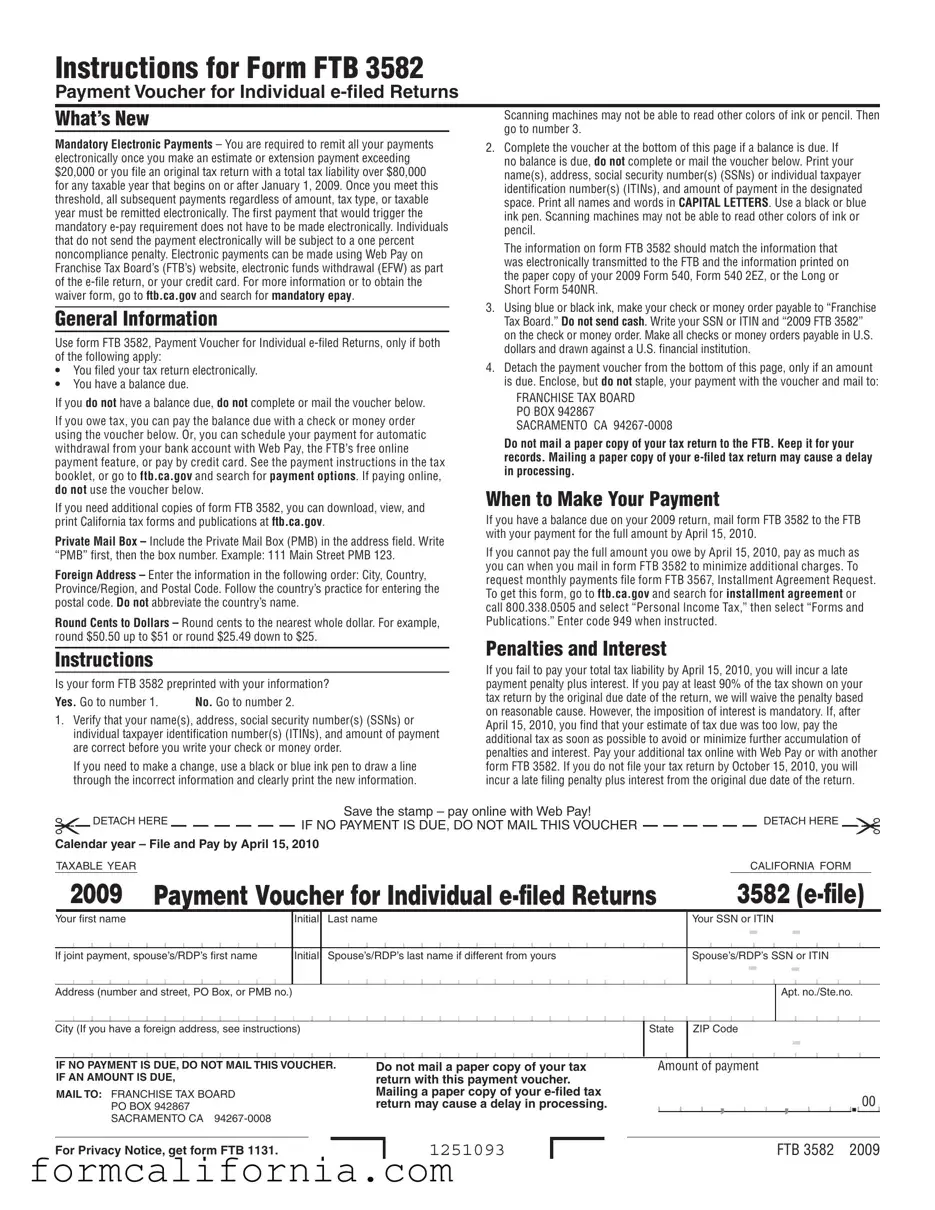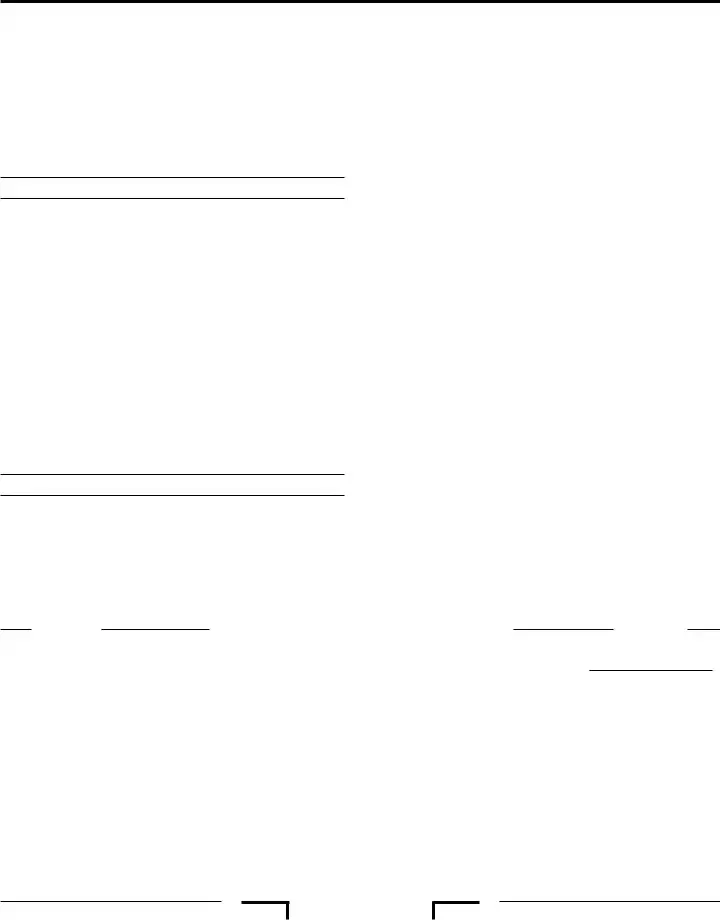The IRS Form 1040-ES, Estimated Tax for Individuals, is quite similar to the California 3582 form as both are used for submitting tax payments, although the 1040-ES is for federal taxes. They share the requirement for taxpayers to estimate their due taxes and make payments accordingly. Where the 3582 form is used alongside e-filed returns for those who owe state taxes in California, the 1040-ES is utilized by individuals to pay estimated federal taxes quarterly. This similarity lies in facilitating taxpayers to pay any owed taxes in a structured manner to avoid lump-sum payments during the tax season.
Form 4868, Application for Automatic Extension of Time to File U.S. Individual Income Tax Return, shares characteristics with the California 3582 form by providing a mechanism for taxpayers to address their filing and payment duties. While Form 4868 is used to request an extension for filing federal tax returns, the 3582 form is specifically for making payments on state tax dues in California for e-filers. Both forms address the need to communicate with tax authorities regarding one's tax obligations and to avoid penalties for late filings or payments.
The California FTB 3567, Installment Agreement Request, shares a purpose with the 3582 form in that it offers taxpayers a way to manage their tax liabilities. The 3567 form is specifically designed for individuals who cannot pay their full tax bill and need to arrange payment over time. This is similar to the 3582's role in facilitating payments for tax dues, albeit the 3582 is not an installment plan request but a payment voucher accompanying an e-filed return. Both forms assist taxpayers in addressing their tax obligations directly with the state's Franchise Tax Board.
Another document with a similar function is the IRS Form 9465, Installment Agreement Request, paralleling the California 3582 form's role in dealing with taxes due. Form 9465 is for taxpayers who need to make arrangements for paying their federal taxes over time. Though the 3582 form doesn't set up an installment plan, it does ensure that payments for e-filed returns are processed correctly, aligning with how both forms help manage tax payments—either by installment or in full to comply with tax laws.
The IRS Form 7004, Application for Automatic Extension of Time to File Certain Business Income Tax, Information, and Other Returns, is akin to the 3582 form as it relates to tax administration procedures. Form 7004 allows businesses extra time to file their tax returns, much like how the 3582 voucher gives individuals a way to submit their state tax payments in California. Although serving different tax filer groups and purposes, both forms facilitate tax compliance within designated deadlines.
Form 8822, Change of Address, indirectly relates to the California 3582 by involving taxpayer information updates. While Form 8822 is specifically for notifying the IRS about a change of address, ensuring communications and tax documents are correctly sent, the 3582 form also requires accurate taxpayer information, including address details, for payment processing. Despite their differing main purposes, both documents emphasize the importance of current taxpayer information in the administration of tax obligations.
The California Form 540, California Resident Income Tax Return, is directly related to the 3582 form as they are part of the state's tax filing and payment process. While Form 540 is for reporting income, deductions, and credits to calculate tax liability, the 3582 serves as the payment voucher for those who file their returns electronically and have a balance due. Their usage is intertwined, with the completion of Form 540 potentially necessitating the use of 3582 for payment submission.
Lastly, IRS Form 1099, used for reporting various types of income other than wages, salaries, and tips, is comparable to the California 3582 form because it involves the process of reporting financial activities pertinent to tax obligations. The 1099 forms require recipients to report additional income on their tax returns, potentially affecting the amount due and necessitating the 3582 payment voucher for those in California. Both forms are integral to ensuring accurate tax reporting and compliance.

